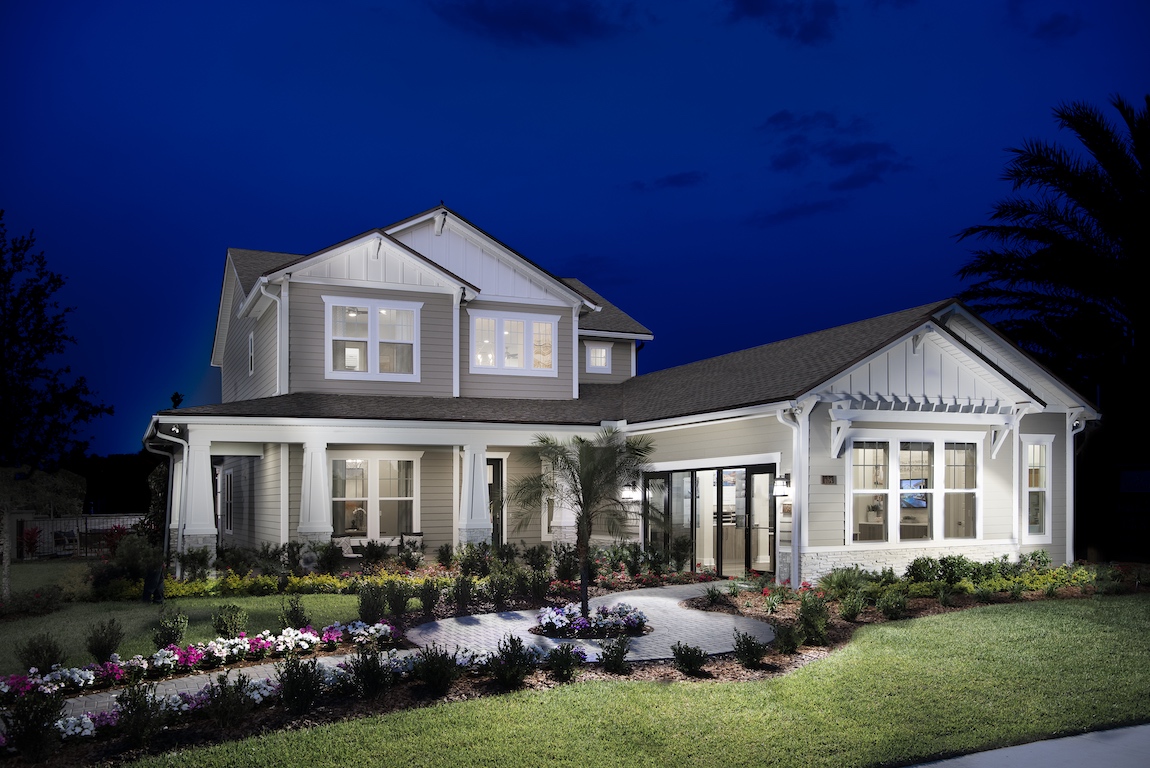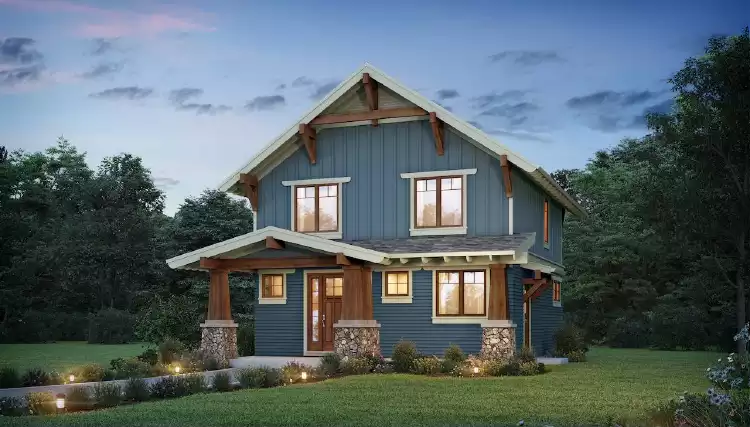Why a craftsman style house Stands Out in Residential Architecture
The Function of Arts & & Crafts Architects in Elevating Architectural Solutions in Residential Design
Arts and Crafts architects considerably affect household layout via their dedication to workmanship and sustainability. They focus on handmade information and natural materials, which improve both appearances and area identification. By entailing clients in the design procedure, these architects develop special living areas that resonate with individual tastes. This approach elevates inquiries concerning the future trajectory of property architecture and its prospective influence on community characteristics. craftsman style house. What lies ahead for this classic style viewpoint?

The Principles of Arts and Crafts Architecture
The significance of Arts and Crafts architecture hinges on its dedication to workmanship and simpleness. This architectural movement emerged in the late 19th century as an action to automation, emphasizing the worth of handmade details and natural products. The concepts of Arts and Crafts architecture prioritize functionality and harmony with the setting. Structures normally feature low-pitched roofing systems, wide eaves, and exposed rafters, advertising a sense of unity with nature.
Artisans played a considerable role in this design, commonly integrating decorative elements like tarnished glass, floor tiles, and woodwork, which show local workmanship. The color palette tends to be natural and restrained, permitting structures to blend perfectly into their surroundings. In enhancement, the layout motivates open floor plans and public rooms, promoting a sense of togetherness. On the whole, the principles of Arts and Crafts architecture commemorate the appeal of simplicity and the value of human connection to both nature and neighborhood.

Sustainable Practices in Residential Design
While the need for ecologically responsible living continues to expand, lasting methods in household style have gained substantial grip amongst architects and homeowners alike. Architects are increasingly including energy-efficient modern technologies and lasting products right into their styles, aiming to lower carbon footprints and boost energy conservation. Methods such as passive solar design, eco-friendly roofings, and rain harvesting systems are ending up being basic components of modern-day residential architecture.
Additionally, the choice of locally sourced products reduces transportation exhausts and sustains regional economies. Focus on all-natural light and ventilation not just improves indoor air high quality yet additionally reduces reliance on man-made lights and environment control systems. These lasting techniques reflect a dedication to maintaining the setting while providing property owners with comfortable, effective space. As recognition of ecological concerns expands, the integration of sustainability in household style is positioned to become a defining attribute of modern architecture, guided by the principles established by Arts and Crafts architects.
Customization and Personalization in Home Design
Customization and personalization in home layout have actually arised as essential trends in action to the expanding wish for distinct living atmospheres that reflect individual preferences and way of livings. Property owners increasingly seek to customize areas that resonate with their individualities, bring about a much more significant connection with their space. craftsman style house. This activity motivates architects to engage customers in the layout procedure, fostering cooperation that ensures the final result symbolizes the house owner's vision
Aspects such as bespoke designs, custom-made products, and customized surfaces enable for a diverse variety of expressions in property design. Arts and Crafts architects play a crucial function in this evolution, stressing craftsmanship and top quality. Their concentrate on integrating creative elements with capability assurances that each home is not just visually pleasing but likewise uniquely fit to the inhabitants' demands. As a result, this focus on customization boosts the overall domestic experience, developing spaces that are both individual helpful resources and enduring.

The Effect of Arts and Crafts Architects on Community Aesthetic Appeals
As communities advance, the influence of Arts and Crafts architects greatly forms their aesthetic landscape. By stressing handcrafted information, natural products, and conventional building and construction techniques, these architects develop homes that resonate with their environments. Their styles often include local plants, textures, and shades, fostering a feeling of harmony between constructed atmospheres and nature.
In addition, the Arts and Crafts activity advertises neighborhood identity via architectural continuity. By motivating home owners to embrace similar style concepts, communities create a cohesive character that improves aesthetic appeal. This architectural harmony not just enriches the aesthetic experience however also imparts a sense of satisfaction among homeowners.
Moreover, the concentrate on sustainability and workmanship in Arts and Crafts architecture aligns with contemporary worths, making these styles pertinent in modern setups. Eventually, Arts and Crafts architects contribute substantially to the overall beauty and cultural integrity of neighborhoods, leaving a long-term influence on their visual heritage.

Future Fads in Arts and Crafts Architecture
With a boosting focus on sustainability and personalization, future trends in Arts and Crafts architecture are positioned to mix standard craftsmanship with contemporary advancement - craftsman style house. Architects are likely to prioritize environmentally friendly materials, making use of redeemed wood and natural rock to improve the sustainability of domestic designs. The assimilation of wise home innovation will certainly become commonplace, enabling customized living experiences without compromising visual stability
The revival of artisanal strategies will cultivate a renewed admiration for handcrafted components, such as bespoke cabinets and custom ceramic tile job. Future styles might likewise mirror an emphasis on community-oriented rooms, encouraging communication and connection amongst residents. Outside living locations will get prominence, effortlessly incorporating nature into the home atmosphere. As Arts and Crafts architecture evolves, it will proceed to recognize its roots while adjusting to contemporary requirements, developing harmonious areas that show specific values and way of lives.
Regularly Asked Questions
What Influenced the Arts and Crafts Motion in Architecture?
The Arts and Crafts activity in architecture was inspired by you can look here a reaction against automation, highlighting handmade quality, natural products, and a go back to typical craftsmanship, aiming to produce unified, useful rooms that celebrated artistry and uniqueness.
Exactly how Do Arts and Crafts Architects Collaborate With Customers?
Arts and crafts architects work together with customers through open dialogue, prioritizing personal requirements and aesthetics. They emphasize craftsmanship and sustainability, promoting a partnership that integrates the client's vision with the designer's experience in layout and products.
What Products Are Frequently Used in Arts and Crafts Houses?
Usual products in Arts and Crafts homes include natural timber, stone, and brick, stressing craftsmanship and natural visual appeals. These components create a cozy, welcoming atmosphere, showing the activity's devotion to top quality and simpleness in style.
Exactly how Do Arts and Crafts Styles Enhance Indoor Living Spaces?
Arts and Crafts layouts boost interior space by promoting all-natural light, open layout, and handcrafted information. These aspects promote a warm, welcoming environment, motivating a connection in between citizens and their atmospheres additional info via thoughtful, useful visual appeals.
What Are Some Famous Examples of Arts and Crafts Architecture?
Famous instances of Arts and Crafts architecture consist of the Gamble Home, Greene and Greene's masterpiece in The golden state, and the Robie Residence by Frank Lloyd Wright. These structures display handcrafted information and consistency with nature, specifying the activity's essence.